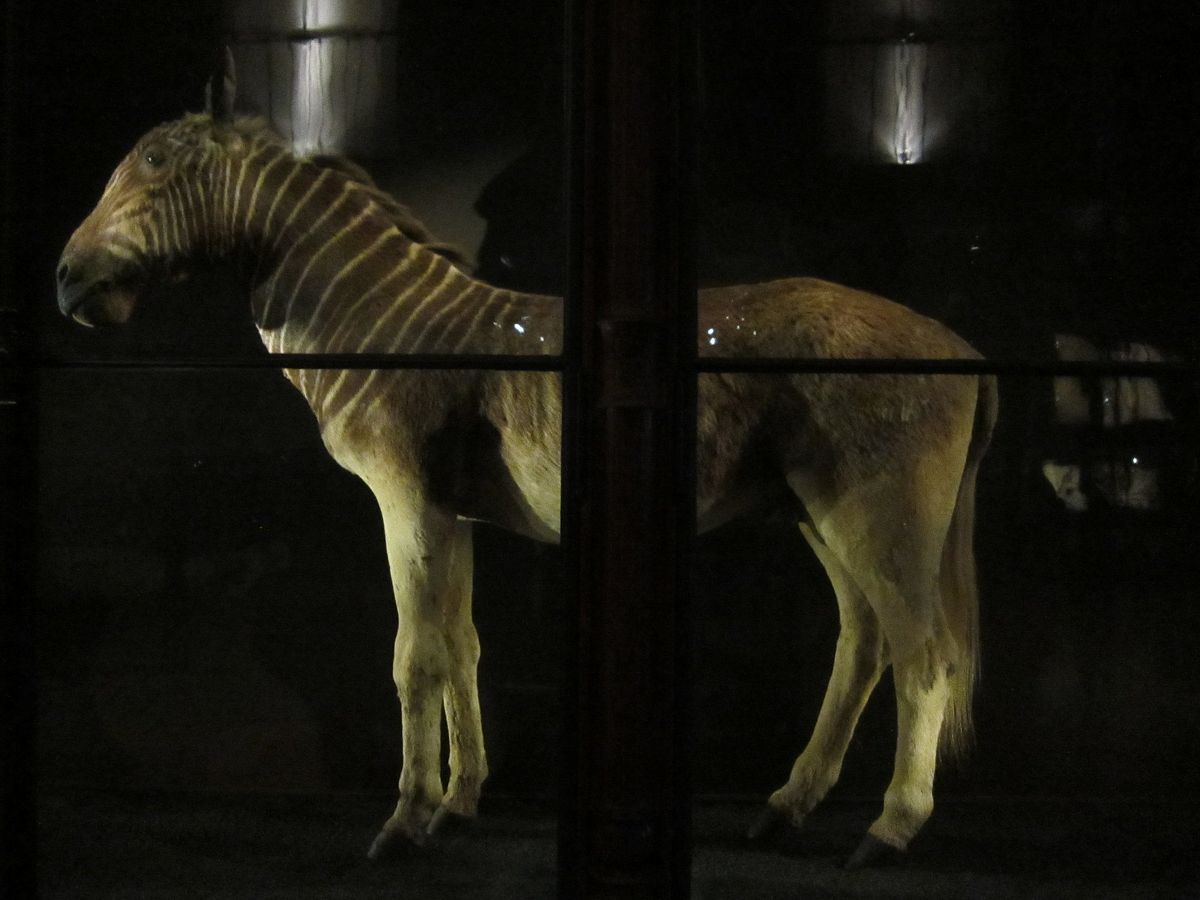About
Holding 257 rare specimens, La Salle des Espèces Menacées et des Espèces Disparues (The Room of Endangered and Extinct Species) is a glimpse into natural worlds that human progress has pushed to endangerment or extinction.
The wood-lined room is one of the original galleries of the Grande Galerie de l'Évolution. It is kept cold and dark, with most light coming from the glass and wood display cases. The specimens, in various states of completion from whole taxidermy examples to single pressed branches, represent animals and plants that have been completely extinguished, and others that are fading from existence.
There are disappearing animals like the Aye-aye, a large nocturnal lemur from Madagascar; the critically endangered Sumatran Tiger; and a preserved Coelacanth, the ancient fish long believed to be extinct that resurfaced in South Africa in 1938, later to be found in the Comoros and Indonesia. A Barbary lion and Cape lion, both extinct in the wild, snarl and stare from their shared glass case in the center of the room.
Many of the taxidermy animals, skeletons, and other specimens are the only examples of extinct creatures. The gallery contains the sole complete black emu skeleton and only complete mounted Schomburgk's Deer, chased for its ornate antlers in Thailand. There is the extinct quagga, a zebra with stripes only on its head; a Rodrigues Giant Tortoise; a dried Cry Violet; a pinned Xerces Blue butterfly; a Tasmanian Tiger; one of two known specimens of the Santa Lucian Giant Rice Rat; a mounted Bluebuck skin; one of only seven preserved Hawaii ʻOo, a bird hunted for its striking yellow feathers; one of three Seychelles giant tortoises; and one of ten known specimens of the Martinique Muskrat, a species that met its final end when it chose the Mount Pelée volcano as its last refuge, perishing in the 1902 eruption.
Alongside these relics of natural history is a gold clock made for Marie-Antoinette by Robert Robin, Louis XVI’s clockmaker. It was confiscated during the French Revolution and still chimes through the stillness of the gallery.
In addition to the Room of Endangered and Extinct Species, the Grande Galerie de l’Evolution extends to 3,000 specimens in its central atrium alone, and 7,000 in the adjoining rooms. It is one of three museums at the Muséum National d'Histoire Naturelle complex in the Jardin des Plantes.
Related Tags
Know Before You Go
On the third floor.
Metro, RER : M5 : Austerlitz - M7 : Censier Daubenton - M 10 : Jussieu ou Austerlitz - RER C
Community Contributors
Added By
Published
April 8, 2010













































